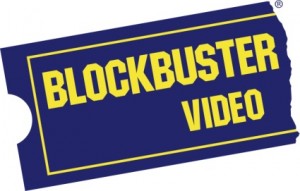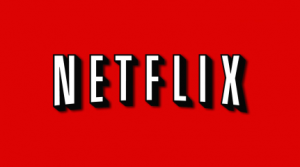#5 Some BS: The World is Changing Too Fast
to Build and Sustain a Competitive Advantage
I recently read an article in Harvard Business Review. The point of the article is that creating a long term competitive advantage is almost impossible today because the world is changing too fast. This is, to sum it up in two letters, BS.
I suppose it depends on how you define “long term”, but for the purposes of this argument, let’s say long-term is at minimum ten years.
Blockbuster, the video rental retail giant, built a long-term competitive advantage compared to Hollywood Video and just about any other video rental brand, over 20 years. More stores. More purchasing power. And a power brand in a growing video rental market. Then poof! Almost overnight they were closing stores and declared bankruptcy.
 Change happens and change happened fast. Was it too fast for Blockbuster to sustain their competitive advantage. Nope. So what killed them?
Change happens and change happened fast. Was it too fast for Blockbuster to sustain their competitive advantage. Nope. So what killed them?
Blockbuster opened its first store in 1986. In 2004 it was the world’s largest video and game rental retailer. In 2005 it initiated on-line video rental. In 2007 a new CEO was hired, the CEO of 7-11, a large convenience store chain. Blockbuster declared bankruptcy in 2010.
 Netflix launched its video rental website in 1998. The idea of Netflix came to the founder when he was forced to pay $40 in overdue fines after returning Apollo 13 well past its due date. In 2000, it adopted its flat fee, unlimited rentals without due dates. Also in 2000, guess what? The company was offered for sale to Blockbuster for $50 million. Blockbuster declined.
Netflix launched its video rental website in 1998. The idea of Netflix came to the founder when he was forced to pay $40 in overdue fines after returning Apollo 13 well past its due date. In 2000, it adopted its flat fee, unlimited rentals without due dates. Also in 2000, guess what? The company was offered for sale to Blockbuster for $50 million. Blockbuster declined.
What killed Blockbuster? Not understanding what truly drives sustainable competitive advantage in a changing world – the ability to anticipate, innovate and adapt. Blockbuster defined its competitive advantage in terms of traditional retailing. In fact it was so embedded in its historical advantage, although losing share to Netflix’s “virtual store”, it hired a retail convenience store CEO to turn the company around! It had plenty of time to change its business model. The world did not move too fast. Blockbuster failed to understand what, in today’s world, is the platform for a sustainable competitive advantage: the ability to step outside habitual views of the world, and build a culture of anticipation, innovation and adaptation.
Why did this happen? Try a simple 30 second experiment I learned from Jean Nitchals:
Stand up. Stretch your arms out to your side. Stretch them toward the ceiling. Now bring your hands down in front of you to belt level and clasp them together, similar to those in the picture to the right.
Which thumb is on top?
Now stretch again the same way. Then clasp your hands together, but this time with the other thumb on top. How does it feel?
We all have habits which feel very natural and comfortable. When someone asks us to change that habit, it feels very uncomfortable. We resist making the change.
Companies are very much the same. The stronger the business habit (a tradition of doing things or viewing the world the same way), the harder it is to change the habit.
Changing old ways can feel overwhelming in its size or complexity, even if there is some recognition that it’s needed. Past success can create arrogance – past success will continue into the foreseeable future…we are so strong that nothing can really hurt us. Or there may be recognition that the business needs to adapt, but toward what is unknown. Often all three are in play to some degree.
It is not that companies today cannot create a sustainable advantage. It’s that a foundational component of competitive advantage has become more dependent on the “soft” skills of an organization (leadership, adaptability, anticipation, collaboration, decision making, employee engagement, culture, performance management), supporting other “hard” skills (quality, convenience, technology, unique process or cost, distribution, product/service development and so on).
Having an advantage in soft skills, while required today, is also not enough. A sustainable competitive advantage requires the combination of hard and soft skills.
A restaurant may be able to quickly adapt to rapidly changing food trends and serve excellent food at a competitive price. But if it does not have the capability to deliver good service or keep great staff, will it truly have a competitive advantage? Probably not.
Competitive advantage can be sustained. The trap is operating as though yesterday’s competitive advantage does not require adaptation to changing circumstances. The longer a historical competitive advantage has been held, the more “habitual” it has become.
Those who failed to see this are numerous. But so are those who have successfully adapted. Look at Intel, who has sustained their advantage in one of the most rapidly changing industries we can imagine. Their advantage is the ability to look forward…to anchor their energy in building a future, not sustaining a past.
As my friends Nancy Burke and Marg Penn would say, “Define yourself not by your past, but by the future you want!”
